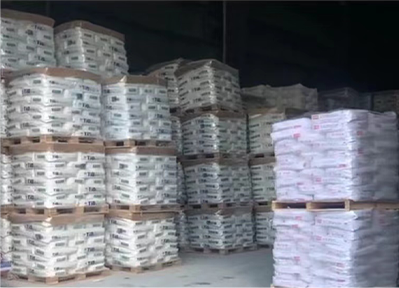
दिसम्बर . 15, 2024 20:50 Back to list
Understanding the Properties and Applications of TiO2 E171 in Various Industries
The Role of TiO2 (E171) in Food and Consumer Products
Titanium dioxide (TiO2), often referred to by its food additive code E171, has been a subject of considerable discussion in recent years regarding its safety and applications in various industries. From its use as a pigment to its functionality as a food additive, TiO2 plays a crucial role in enhancing the quality and safety of a wide array of products consumed daily.
What is TiO2 (E171)?
Titanium dioxide is a naturally occurring oxide of titanium that is extensively used due to its excellent properties, including high opacity, brightness, and UV resistance. In the food industry, TiO2 serves primarily as a white pigment that enhances visually appealing presentations in a variety of consumables, including candies, dairy products, and sauces. Due to its ability to provide a bright whiteness without affecting the flavor or texture of food, E171 has become a prevalent additive in many processed goods.
Beyond food, TiO2 is used in various other applications, such as paints, coatings, cosmetics, and pharmaceuticals. Its stability and resistance to degradation make it an ideal ingredient in products that require a long shelf life or exposure to sunlight.
Safety and Controversies
Despite its widespread use, the safety of titanium dioxide as a food additive has come under scrutiny. In 2021, the European Food Safety Authority (EFSA) re-evaluated the safety of E171 and concluded that there was insufficient data to support its safety when consumed. They classified it as a substance that could no longer be considered safe for use in food, primarily due to concerns about the potential for it to accumulate in the body and its associated health risks.
tio2 e171

Many health advocates argue that the lack of comprehensive studies on long-term exposure to titanium dioxide through food consumption warrants caution. Some studies have suggested that nanoparticles of TiO2, when ingested, could potentially lead to adverse health effects, including inflammation and genotoxicity. As a result, several countries are moving toward stricter regulations or outright bans on the use of E171 in food.
Alternatives and Future Trends
In light of the controversies surrounding TiO2, the food industry is exploring alternative whitening agents and natural pigments. Ingredients like calcium carbonate or various plant-based colorants are being considered as substitutes to minimize health risks associated with synthetic additives. This shift not only aligns with consumer demand for cleaner, more natural products but also encourages innovation in the food processing sector.
Furthermore, the clean label movement is gaining momentum, with consumers increasingly seeking transparency about what goes into their food. This trend has prompted manufacturers to revise their ingredient lists, leading to a decline in the use of controversial additives like TiO2. Products marketed as free from artificial additives often gain a competitive edge in the marketplace, appealing to health-conscious consumers.
Conclusion
Titanium dioxide (E171) serves as a significant player in the food and consumer products industry, valued for its properties but facing growing scrutiny regarding its safety. As research continues to emerge, manufacturers and regulators must navigate the delicate balance between maintaining product quality and ensuring consumer safety. The shift toward natural alternatives and increased transparency in ingredient labeling will undoubtedly reshape the landscape of food production and consumption in the years to come.
In summary, while TiO2 has historically contributed to food aesthetics and quality, the push for safer and more natural options highlights the need for ongoing dialogue between consumers, scientists, and the food industry. As we move forward, the choices we make regarding food additives like E171 will influence not only our health but also the practices of manufacturers striving to meet consumer expectations in a rapidly changing market.
-
High-Quality Determination of Sulphate as TiO2 Wholesale Supplier & Manufacturer from China
NewsJul.05,2025
-
Competitive Harga Titanium Dioxide Wholesale Prices from Leading Manufacturers in China
NewsJul.05,2025
-
High-Quality Titanium Dioxide R605 Powder Coating Multi-Purpose Product – Reliable China Supplier
NewsJul.04,2025
-
High Purity Chlorination Process Titanium Dioxide Manufacturer & Wholesale Supply from China
NewsJul.04,2025
-
China Lithopone in China Supplier – High Quality Lithopone ZnS 30% Powder for Wholesale
NewsJun.10,2025
-
Top China Titanium Dioxide Company – Premium TiO2 Powder Supplier & Manufacturer
NewsJun.10,2025
